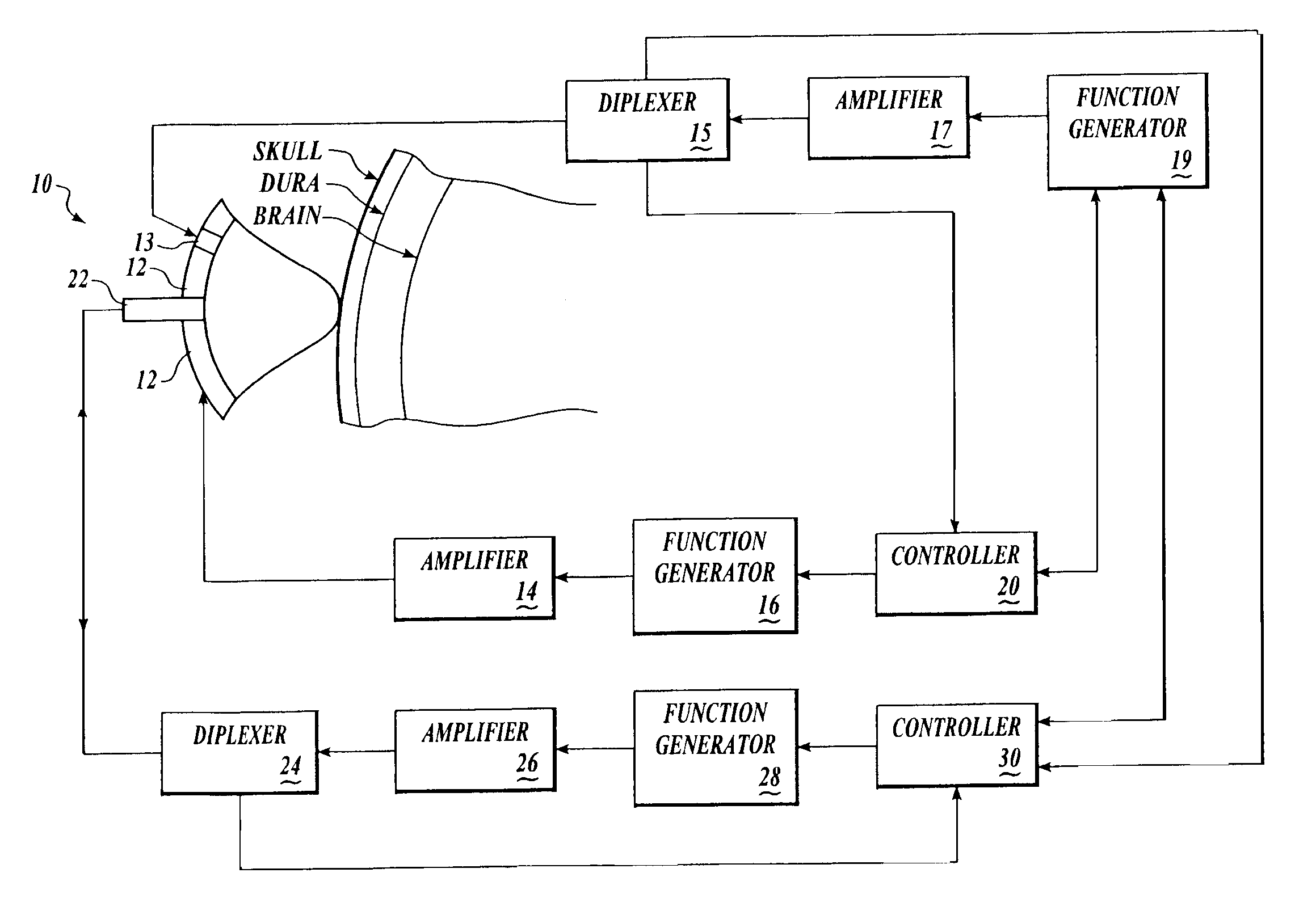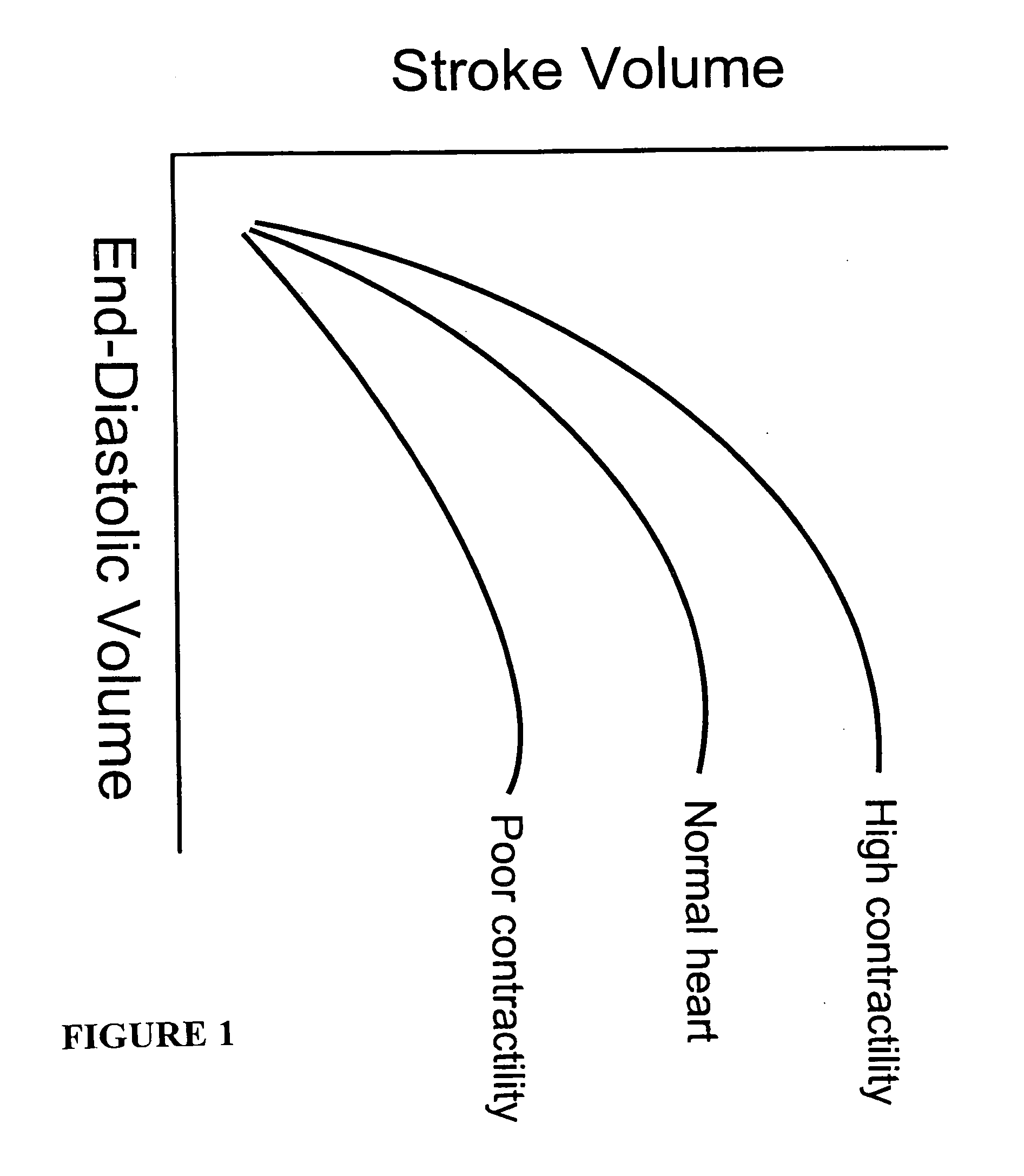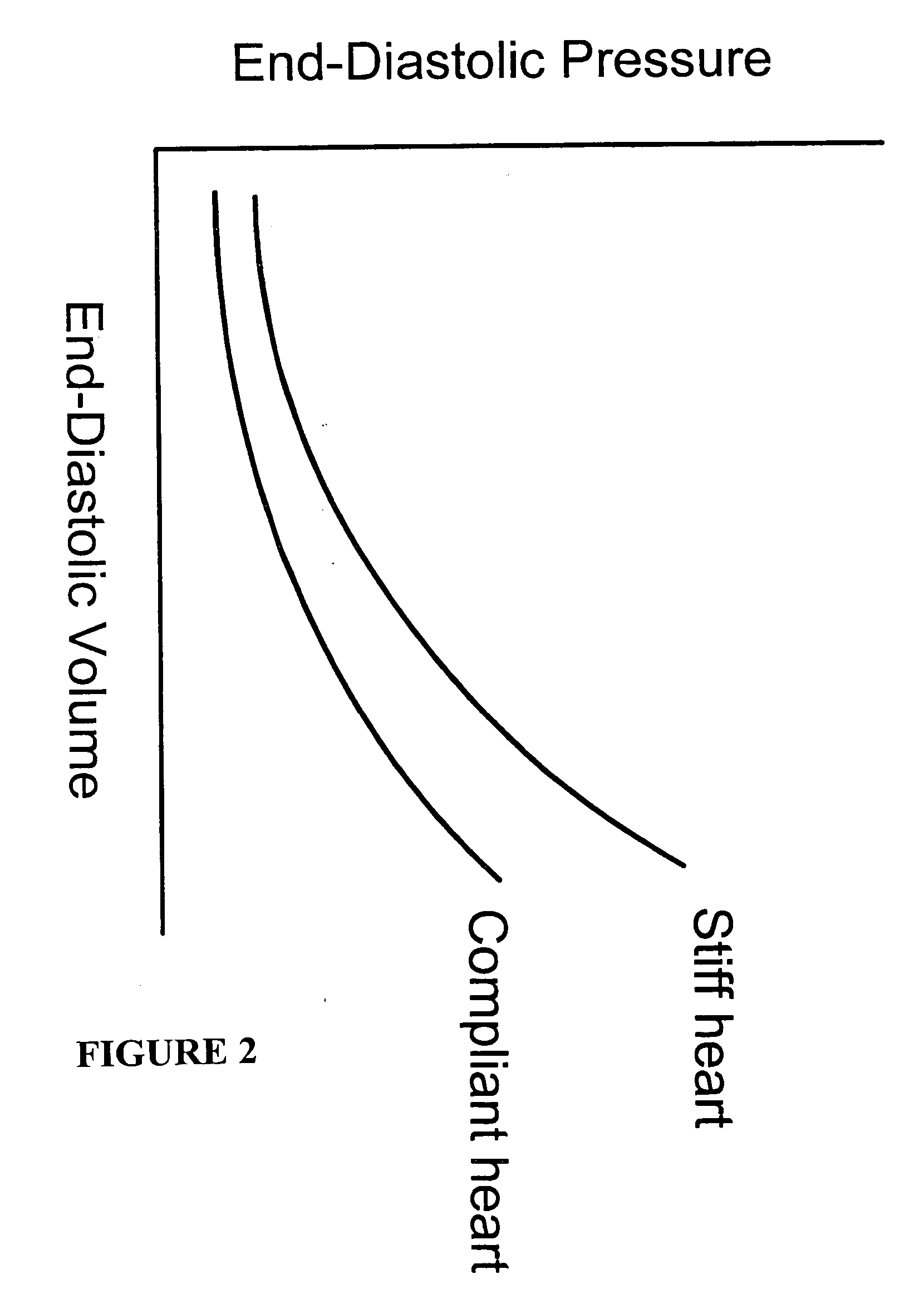Systems and methods for making noninvasive assessments of cardiac tissue and parameters
a cardiac tissue and non-invasive technology, applied in the field of systems and methods for assessing cardiac tissue and cardiac parameters non-invasively, can solve the problems of difficult characterization of internal tissues using non-invasive and non-traumatic techniques, unreliability, and difficulty in non-invasive detection of various cancers, and achieve the effect of maximizing the displacement of tissu
- Summary
- Abstract
- Description
- Claims
- Application Information
AI Technical Summary
Benefits of technology
Problems solved by technology
Method used
Image
Examples
example 1
[0155] Brain tissue was used as a model experimental system. We have shown in vitro (FIG. 10A) and in vivo (FIG. 10B-D) and describe in detail below, that intrinsic displacements of brain tissue (e.g. compressions and distensions), and their various acoustic scatter properties, can be directly measured using a standard transcranial Doppler (TCD) transducer, off-the-shelf data acquisition systems, and novel analysis of the acoustic backscatter signal from brain. Myocardial tissue displacement may be measured in the same fashion and related to tissue strain, tension, and the like, as described above, to make noninvasive assessment of cardiac tissue and parameters.
[0156] An in vitro model for examining changes in ICP using acoustic techniques was constructed using fresh bovine brain immersed in fluid in a water-tight, visually and acoustically transparent bottle attached to a hand-pump for changing the pressure on the brain. An acoustic transducer (ATL / Philips Medical Systems, Bothell...
example 2
[0164] We have shown, in vitro, using a beef brain model similar to that described above, that a palpation pulse of ultrasound across a range of acoustic intensities can cause increasing displacements of brain without causing gross tissue damage. Palpation of myocardial tissue using ultrasound pulses may be achieved in a similar fashion.
[0165] Fresh bovine brain was immersed in fluid in a water-tight, visually and acoustically transparent bottle attached to a hand-pump for changing the pressure on the brain. ATL acoustic transducers (ATL-Philips Medical Systems, Bothell, Wash.), and the bottle, were placed in water so that the focus of the acoustic palpation and interrogation transducers were near the edge of the brain, but within the brain. Using LeCroy Waverunner oscilloscope, we collected acoustic interrogation waveforms backscattered from brain. For palpating and interrogating beef brain, in vitro, the interrogation pulses were administered as described with respect to FIG. 10A...
PUM
 Login to View More
Login to View More Abstract
Description
Claims
Application Information
 Login to View More
Login to View More - R&D
- Intellectual Property
- Life Sciences
- Materials
- Tech Scout
- Unparalleled Data Quality
- Higher Quality Content
- 60% Fewer Hallucinations
Browse by: Latest US Patents, China's latest patents, Technical Efficacy Thesaurus, Application Domain, Technology Topic, Popular Technical Reports.
© 2025 PatSnap. All rights reserved.Legal|Privacy policy|Modern Slavery Act Transparency Statement|Sitemap|About US| Contact US: help@patsnap.com



